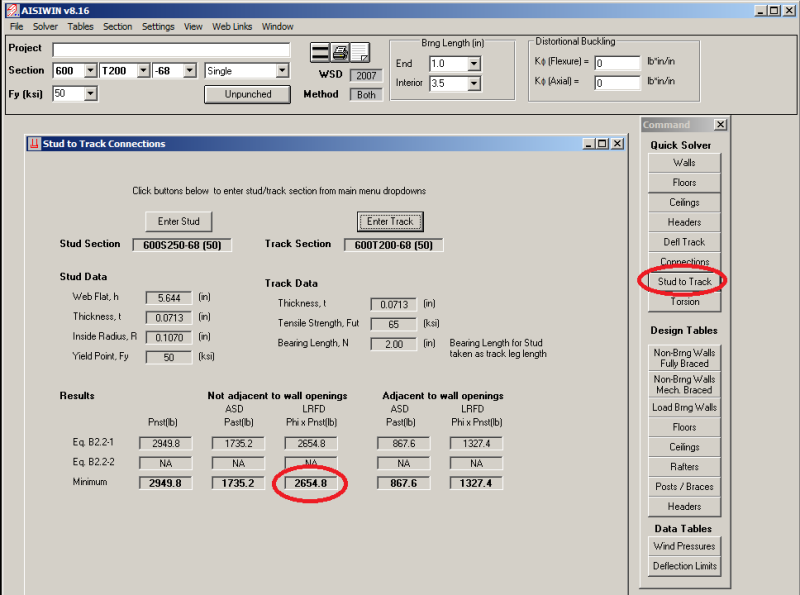MacGruber22
Structural
Getting into more serious lightgage design than I have done in the past. Attached is a sketch that shows tension straps welded to the shear wall double end posts (in reality the straps are configured as x-bracing, 4 straps total). I am concerned about a few things.
1. With a single-sided angle, the vertical component of the strap force has to pass through the inside stud to get to the angle. To me, the allowable tension capacity of the end post is limited to one stud. Our shear wall spreadsheet does not check this. Maybe there is good reason not to?
2. Our spreadsheet relies on the horiz. component of the strap force to be resisted by the track, but doesn't explicitly check it (!). My question is what unbraced length lengths should be used for this compression member with PAF's at some interval. Also, there has to be an AISI limit on the number of fasteners over a given length that can resist shear.
This single-sided angle detail seems to be the standard at our office, but my feeling is that two angles would greatly help out with my question number 1, in additional to prying on the embed (which also seems to be ignored). Part of me also, wants to provide standard holes in the angles (or weld the washers) and transmit the shear directly to the anchors, and ignore the track for in-plane loads.
"It is imperative Cunth doesn't get his hands on those codes."
1. With a single-sided angle, the vertical component of the strap force has to pass through the inside stud to get to the angle. To me, the allowable tension capacity of the end post is limited to one stud. Our shear wall spreadsheet does not check this. Maybe there is good reason not to?
2. Our spreadsheet relies on the horiz. component of the strap force to be resisted by the track, but doesn't explicitly check it (!). My question is what unbraced length lengths should be used for this compression member with PAF's at some interval. Also, there has to be an AISI limit on the number of fasteners over a given length that can resist shear.
This single-sided angle detail seems to be the standard at our office, but my feeling is that two angles would greatly help out with my question number 1, in additional to prying on the embed (which also seems to be ignored). Part of me also, wants to provide standard holes in the angles (or weld the washers) and transmit the shear directly to the anchors, and ignore the track for in-plane loads.
"It is imperative Cunth doesn't get his hands on those codes."

